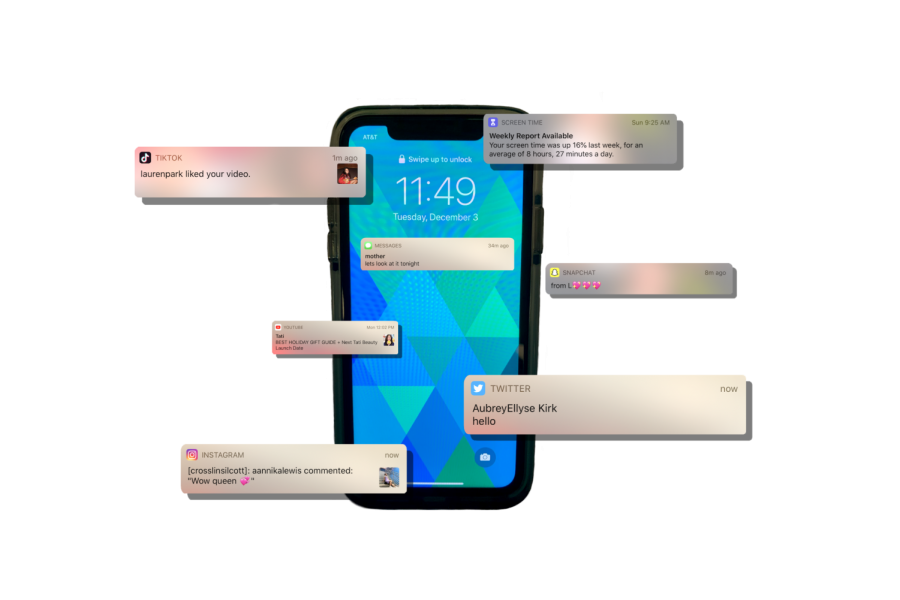Constantly connected teenagers try to manage friendships, time
January 13, 2020
With the abundance of technology that now seems to permeate every aspect of teens’ lives, social media is constantly surrounding everyone: everything people do and everyone people know is involved either directly or indirectly. Because social media platforms such as Instagram, Snapchat and Twitter are so prevalent in most young people’s lives, many question whether they are more harmful or beneficial, especially for the youth. Apps like these are not going anywhere soon. If anything, more of them are going to be introduced in the future, so the question still stands: Is social media a fun, harmless way to keep up with friends? Or does it leave users feeling worse about themselves than before they logged on?
“If you remain positive and share positive messages, positive things can come out of it,” student support counselor Gina Sanchez said.
In Sanchez’s experience, social media is more misleading than it may seem. While apps like Facebook, Instagram and Snapchat are great tools to keep up with friends and family, Sanchez has noticed kids often get caught up in comparing their lives, appearances and accomplishments to those they see online.
“We don’t realize that most women are not a size 2; most women are a [size] 12, 14 or 16,” Sanchez said. “They don’t have perfect skin; they don’t have perfect hair, but when all we see is airbrushed, kids don’t understand that it’s not reality.”
Most social media users have had at least one negative experience on social media, so why do people continue to use it? A study done by the Pew Research Center titled “Why Americans use social media” concluded that people strongly value connecting with others: whether it be family, friends or others with similar hobbies and interests.
“I like seeing other people — that sounds so stalkerish — but it’s just cool seeing different people’s outfits and, like, the songs they listen to,” senior Megan Salazar said.
Salazar, an avid social media user, said apps for keeping up with friends and family are purely for fun and shouldn’t be taken too seriously. She enjoys using apps like TikTok in which people post videos involving skits, dancing and other entertaining content, but she has also seen its harmful effects.
“Everybody always compares themselves to the pretty girls; I’ve noticed a lot of videos [on TikTok] that are like, ‘I’m not gorgeous but make me famous,’” Salazar said. “I don’t like that; everybody’s pretty, everybody’s awesome.”
Staying in touch with family and friends that live in other parts of the world can be difficult, but social media can help bridge the gap and allow people to remain involved with each others’ lives. Junior Sean Garvin said because he has friends and family in all different parts of the world, like Hong Kong, the Czech Republic and the Philippines, he mainly uses social media to stay in touch with them. Junior Sydney Dixon also has family and friends that live in different places and said she likes that social media can help her see what’s happening in their lives.
“A lot of my friends go to Kingwood High School and since I can’t see them everyday, posting on Instagram or sending a snapchat streak is how we can stay connected,” Dixon said.
In the end, social media was created to be a medium in which people could connect with others and although it may have its downsides, the main idea remains.
“Life is all about people around you and acceptance,” Sanchez said. “Just be who you are and be okay with it.”








